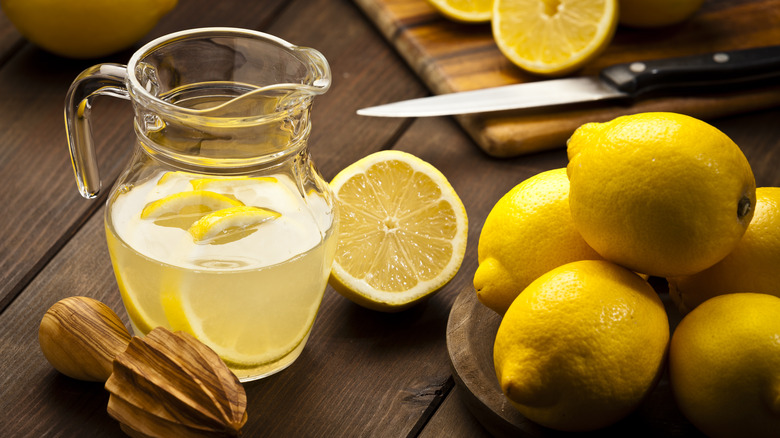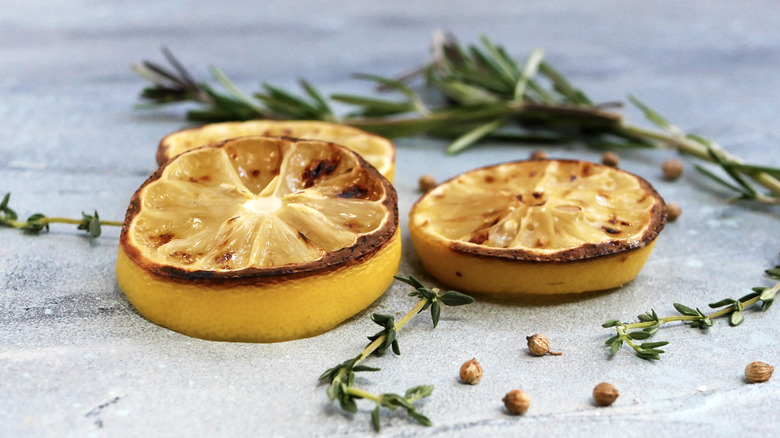Roast Your Lemons For The Most Flavorful Lemonade
In its simplest and most popular form, lemonade is a modest combination of lemon juice, sugar, and water — the perfect refreshment for a hot day. Looking back to its earlier incarnations, however, the drink can be quite involved. Its first known recipe, recorded in a 12th-century Arabic treatise, called for herbs and spices and was lauded as a healthy — and expensive — elixir, while later recipes from the 19th century brought in ingredients like calves-feet jelly and raw eggs. We can't speak to the efficacy of the latter version, but we can vouch for a more approachable modification to your average lemonade recipe that's a step further from adding salt for a new take on the classic: Use roasted lemons instead of fresh ones.
After just a little time in the oven (or a long time on the stove), something magical happens. As the lemons roast, the sugars in the citrus juice take on a delectable caramelized crunch, leaving you with a supremely flavorful batch of lemons with a subtle hint of smokiness. The next step? A better lemonade.
High heat or low and slow
There are two ways to roast lemons for lemonade. To achieve that coveted char on the outer edges of your lemons, you want to slice them in half and roast them anywhere from 20 to 30 minutes between 375° and 400° Fahrenheit, or 350° for 15 to 20 minutes in an air fryer. Use your favorite recipe for easy, freshly squeezed lemonade to determine how many lemons to use, but if it's your first time making a batch, know that you might need more than you think. Generally, it takes six medium lemons to yield a cup of juice. Give your lemons a roll on your countertop to get their juices flowing before slicing them, then place them skin-side down on a lined sheet tray.
If you're not in a rush, you can roast them low and slow by placing the halves in a Dutch oven and covering them with water. After about an hour and 30 minutes in an oven heated to 375 degrees Fahrenheit, their juices will transform into a fragrant — and, like their high-roasted counterparts, caramelized — deep golden brown. For even more flavor, play around with adding additional ingredients to your sheet tray. A bit of vanilla bean paste in your roasting pan will add warm sweetness, while drizzling your sheet-pan lemons with olive oil will take things in a slightly savory direction.
Cool, blitz, and strain
Once your lemons are roasted and cooled, the hardest part of the process is over. You can either pass the lemons through a strainer and leave their piths behind (we recommend snacking on the roasted remnants or chopping them up finely to add unique zest to dressings, à la preserved lemons), or you can blitz everything up in a food processor (minus the seeds) before you strain. The latter will leave you with more liquid, but both will yield a wonderfully cloudy concentrate. Mix it with water and sugar, and never look back.
To boost the complexity of the drink even further, you could peel the lemons before roasting them and use the peels to imbue a simple syrup with their lovely lemony flavor. Fresh mint — or even a savory woody herb like rosemary or thyme — are also great additions. Without them, your roasted lemonade will still be delectable enough to make all summer long.


